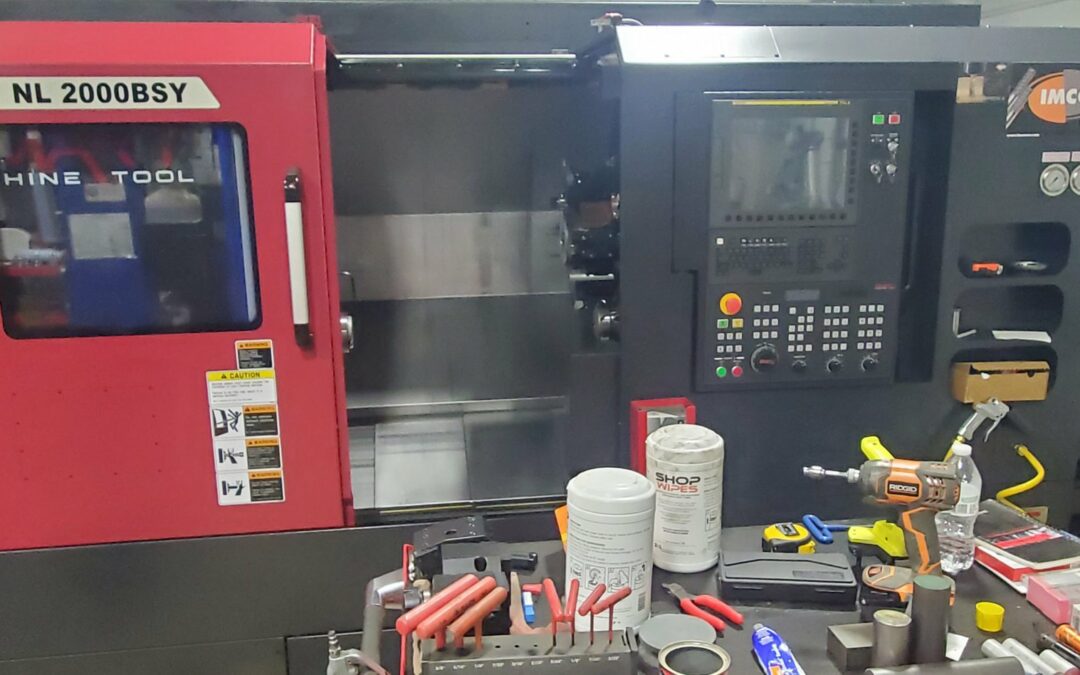Precision Engineering: A Comprehensive Guide to Multi-Axis Lathes
Multi-Axis Lathes, the pinnacle of machining sophistication, have transformed the landscape of precision engineering. This comprehensive guide explores the key features, applications, and considerations that define multi-axis lathes, providing a roadmap to understanding their unparalleled capabilities.
Key Features:
Simultaneous Motion in Multiple Axes:
The defining characteristic of multi-axis lathes is their ability to move and control the cutting tool in multiple directions simultaneously. This simultaneous motion allows for intricate and complex machining operations in a single setup.
Versatility in Machining:
Multi-axis lathes are renowned for their versatility, accommodating a wide range of machining operations. From turning and facing to drilling, milling, and thread cutting, these lathes excel in producing complex geometries with precision.
Live Tooling Capabilities:
Many multi-axis lathes are equipped with live tooling, enabling secondary operations such as milling and drilling. This integration of live tooling enhances efficiency by reducing the need for additional setups.
Y-Axis Capability:
The inclusion of a Y-axis allows for off-center milling and drilling operations. This capability expands the scope of machining possibilities, enabling the production of intricate parts with diverse features.
Applications:
Aerospace Components:
Multi-axis lathes find extensive use in the aerospace industry for machining complex components such as turbine blades, engine casings, and critical structural parts. The ability to produce intricate geometries with high precision aligns perfectly with the demands of aerospace engineering.
Medical Devices:
In the medical field, where precision is paramount, multi-axis lathes play a crucial role in manufacturing components for surgical instruments, implants, and medical devices. The ability to create intricate features and contours makes them indispensable in this sector.
Automotive Manufacturing:
The automotive industry leverages multi-axis lathes for the production of critical components like camshafts, gears, and transmission parts. The versatility of these lathes allows for efficient machining of complex shapes in a single operation.
Complex Prototyping and R&D:
Multi-axis lathes are invaluable in prototyping and research and development scenarios. Their ability to handle intricate designs and varied materials makes them ideal for producing prototypes and testing new concepts in a controlled machining environment.
Considerations in Choosing a Multi-Axis Lathe:
Number of Axes:
Evaluate the specific machining requirements of your projects. The number of axes required depends on the complexity of the parts you intend to produce. Multi-axis lathes can have two, three, four, or more axes to suit different applications.
Rigidity and Stability:
Rigidity and stability are crucial factors, especially when machining complex and precision components. Ensure that the chosen multi-axis lathe provides the required stability to achieve the desired machining accuracy.
Tooling and Workholding Options:
Assess the tooling options and workholding capabilities of the multi-axis lathe. Compatibility with a variety of cutting tools and workholding solutions enhances the machine’s versatility.
Control System:
Consider the control system of the multi-axis lathe. Advanced CNC control systems enhance programming capabilities and facilitate seamless integration with CAD/CAM software for complex part programming.
Opting For Used Multi-Axis Lathes Over New Models
Selecting used multi-axis lathes over new models provides a practical avenue for cost-conscious buyers. While new machines may carry a higher price tag, used multi-axis lathes can offer significant savings without compromising on performance. As advancements in technology ensure lasting durability, opting for pre-owned units allows businesses to access the sophistication of multi-axis machining at a more budget-friendly investment, making it a prudent choice for those seeking efficient and economical solutions. Learn what to look for when purchasing second-hand lathes.
Summary
Multi-axis lathes stand as marvels of precision engineering, offering unparalleled capabilities in machining complex components. Understanding their key features, applications, and considerations empowers manufacturers to harness the full potential of multi-axis lathes in achieving intricate designs with uncompromising precision.
Revelation Machinery offers regularly updated inventory of used multi-axis lathes for sale in a variety of sizes and capacities from top brands like Hurco, Doosan, Okuma, Mazak, and much more. If you have any questions or are looking for a specific type of multi-axis lathe, please feel free to reach out to our equipment experts! Interested in selling your equipment? Learn how to sell used multi-axis lathes for cash to Revelation Machinery today!
Interested in learning more about other lathe machines? Discovery everything you need to know about each type of lathe with comprehensive guides on:

